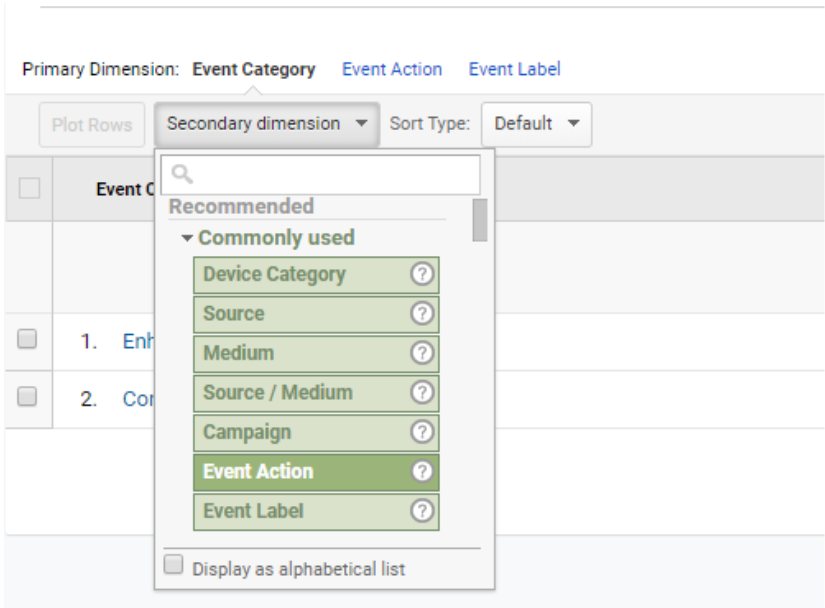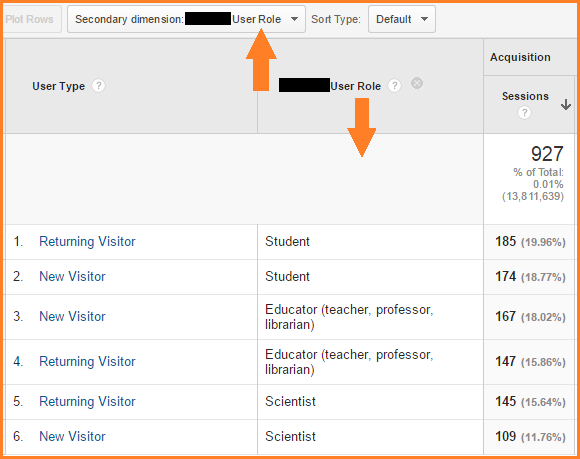Browsing the Midst of Additional Measurement in Google Analytics: A Thorough Expedition on Its Capability
In the world of digital analytics, the intricacies of data analysis typically hold the secret to unlocking useful understandings. Within the large toolkit of Google Analytics exists a feature that offers as a concealed gem for those that seek a deeper understanding of individual behavior and internet site efficiency. Second measurements, though seemingly simple at initial look, harbor a wide range of untapped potential waiting to be utilized. As we get started on this trip to explore the nuanced capability of secondary measurements, we will certainly discover how this attribute can illuminate patterns, unveil relationships, and eventually lead the way for educated decision-making in the electronic landscape.
Recognizing Additional Measurements in Google Analytics
Comprehending just how additional dimensions job is critical for leveraging the full power of Google Analytics. By integrating main metrics with secondary dimensions, you can acquire valuable insights that drive educated decision-making and optimization strategies.
Leveraging Additional Measurements for Data Evaluation
Structure upon the foundational understanding of exactly how second dimensions boost data analysis in Google Analytics, the use of these extra layers of information ends up being vital in removing valuable understandings for notified decision-making and optimization techniques. By leveraging second measurements, experts can delve deeper right into the efficiency metrics by adding more context to the main measurements, hence revealing hidden patterns and correlations that could not be apparent at initial look. This deeper level of evaluation makes it possible for services to better comprehend individual actions, identify trends, and determine locations for renovation.
Moreover, additional dimensions offer a more extensive sight of the data, permitting division based upon different specifications such as demographics, devices, website traffic sources, and a lot more. This segmentation assists in a more granular analysis, allowing businesses to tailor their projects and approaches to particular target market sectors for boosted targeting and customization. Essentially, the strategic usage of second measurements encourages companies to make data-driven choices that drive growth and success in the electronic landscape.
Advanced Strategies for Additional Dimension Application
Exploring elaborate approaches to harness the complete possibility of additional measurements in Google Analytics raises the depth and sophistication of information evaluation for calculated decision-making. One advanced technique for executing second dimensions is making use of custom dimensions. By defining customized measurements, customers can sector data further to obtain even more details insights right into customer habits, such as tracking communications with particular components on a web page or anchor keeping track of the performance of a certain marketing campaign. An additional sophisticated approach is the utilization of regex (normal expressions) within additional measurements. Regex enables even more effective and versatile pattern matching, enabling customers to create intricate filters for information analysis. Furthermore, incorporating additional dimensions with sophisticated segments can give much more granular insights by applying numerous layers of division to the data. This method enables for a much deeper understanding of user habits based upon various standards at the same time. Applying these innovative strategies for additional dimensions in Google Analytics equips individuals to perform much more advanced analysis and make data-driven decisions with precision.
Interpreting Insights With Secondary Dimensions

When analyzing insights with second dimensions, it is necessary to consider the context of the data and just how different dimensions interact with each other. Understanding which specific web traffic resources lead to higher conversion rates or identifying which tools users choose for making purchases can supply actionable understandings for optimizing advertising and marketing projects and improving total internet site efficiency. By very carefully taking a look at the data with additional measurements in mind, companies can make educated choices that drive purposeful outcomes and improve their electronic visibility.
Optimizing Performance With Additional Dimensions

One key method to enhance efficiency with secondary measurements is by segmenting information more granularly. This allows you to separate specific variables that might be influencing your metrics and get a far better understanding of what drives success or failure in your digital efforts. For instance, by incorporating second measurements such as 'device category' and 'touchdown web page,' you can identify which gadget types are most efficient read the article for certain landing web pages, allowing you to customize your approaches accordingly.
Moreover, making use of secondary dimensions can assist you determine trends, patterns, and relationships that may not be apparent when evaluating data with key measurements alone. my explanation This deeper degree of analysis can lead to even more educated decision-making and eventually enhance the general efficiency of your web site or electronic advertising and marketing campaigns.
Conclusion
To conclude, second measurements in Google Analytics play a crucial function in boosting data evaluation and offering much deeper insights into web site efficiency. By making use of advanced strategies and analyzing the data efficiently, services can optimize their approaches and improve general efficiency. Recognizing the capability of secondary measurements is vital for making educated choices and driving success in the electronic landscape.
By leveraging additional dimensions, analysts can delve much deeper into the performance metrics by including even more context to the primary measurements, hence uncovering covert patterns and correlations that may not be obvious at first glance. One advanced method for executing additional dimensions is the use of personalized dimensions.Having grasped innovative strategies like custom-made dimensions and regex for second dimension implementation in Google Analytics, the next vital step is interpreting the beneficial insights obtained through these advanced data division methods. Interpreting insights via additional dimensions involves evaluating the relationships between the key and second measurements selected, discovering patterns, trends, and relationships that may not be instantly apparent when looking at the information in its totality.When translating understandings with secondary dimensions, it is crucial to consider the context of the information and just how different dimensions connect with each various other.